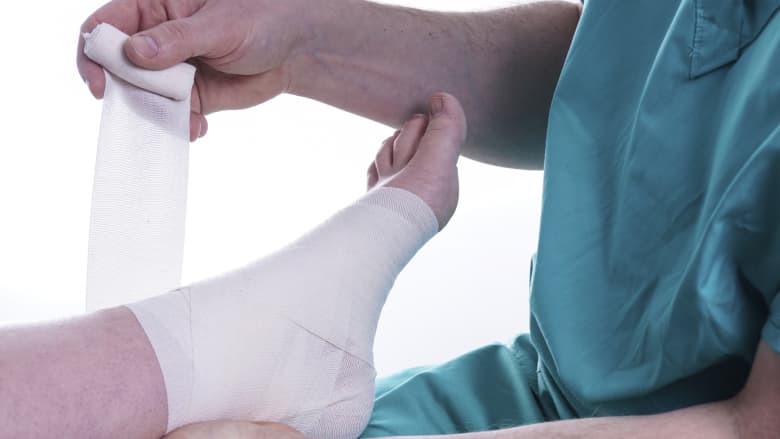Ankle sprains and strains are among the most common injuries sustained by athletes. Unfortunately, there isn’t much you can do to prevent these injuries beyond wearing the proper footwear and treading carefully.
Learn more: All About Ankle Sprains and Strains
But when they occur, the way you treat and care for these injuries can make a difference in recovery time and likelihood of further injury.
Taping or wrapping an injured ankle provides stability and compression. Learn more: Ankle Sprain and Strain Treatment Options
One of the most reliable treatments to help an ankle sprain or strain is to tape the ankle, which provides stability (allowing time for the soft tissues to heal) and compression (which can help manage inflammation).
See Common Running Injuries: Foot and Ankle Pain
These tips can help ensure you’re taping your ankle correctly.
1. Prevent blistering
While taping your ankle injury properly can help you stabilize the ankle, it can also add friction to the area. Make sure to prevent blistering by:
- Placing non-adhesive gauze pads underneath your tape or pre-wrap over the area to be taped. You can also use spray adhesive to help hold the pre-wrap in place.
- Regularly changing the wrap or bandage on your ankle, allowing the skin of your foot time to breathe.
- Ensuring that the wrapped area is cleaned thoroughly prior to any tape or pre-wrap being applied.
2. Use anchor tape
If the tape can move or come undone, it won’t provide the intended amount of support:
- Use two small pieces of athletic tape to anchor the pre-wrap in place. Position one at each end of the pre-wrap, top and bottom.
- Before you start wrapping tape around the ankle, place a long strip over the heel and up the sides of the ankle to make a "stirrup." This will help stabilize the ankle.
3. Protect the ankle when it's not taped
Taping your ankle is useful when you need to be active or walk around, but it's only one part of R.I.C.E., a larger treatment protocol.
See Ankle Sprain and Strain Treatment Options
In addition to taping, don't neglect the other R.I.C.E. steps:
- Rest: Ensure that you are staying off the ankle after an injury.
- Ice: Paired with nonsteroidal anti-inflammatory medication, ice will reduce swelling.
- Compression: Keeping the ankle wrapped throughout the day will help promote stability and reduce swelling. When you're relaxing at home, you can use an Ace bandage to wrap the ankle as opposed to taping it.
- Elevation: Elevating the ankle will reduce blood flow, helping to minimize swelling after the injury.
Be sure to seek medical attention if the injury isn’t improving after being treated at home.






